Observations of prey brought to purple martin nestlings
This past summer (2017), I spent a good deal of time monitoring the insect prey brought to their gourds by purple martins. Previously, I had photographed and recorded video at barn swallow nests, but found that their prey items could not be identified in the majority of feeding visits. In contrast, the martins were more than obliging in landing on a perch above the gourds and showing me what insects were hanging out of their beaks. Or, more accurately, they were not afraid of me standing on a scaffold near them because they know I could not fly and seldom jumped. But, they were reluctant to fly to their gourd, thus revealing the location of their nest. I limited my observations to 5 minute sessions so as not to delay their feeding too long. During these sessions, the martins usually waited me out, and then delivered their prey as soon as I climbed down to the ground. But, occasionally one martin would eventually go to the gourd anyway. On the back side of the rack, the gourd entrances were hidden from my view and feeding went on as usual.
From the frequency of feeding at each gourd and the estimated volume of prey being brought, it appeared that there was no shortage of nearby insect prey. As for my previous year’s concern that the large number of dragonflies brought to the martin nests would put that species at risk, there were more dragon flies this year than last, including after the martins had all fledged. Butterflies were also taken, but, mostly various skippers and cabbage whites, species that are still extremely common here. Of course, most small insects were hidden in the bird's mouth. On one day, great mouthfulls of hover flies were being brought to the gourds. Tree swallows were also doing the same. Hoverflies must swarm in large numbers. The martins can continue scooping up insects while retaining large numbers in their mouth. They also frequently return to the nest with a mix of small and not so small species. They are truly aerial vacuum cleaners.

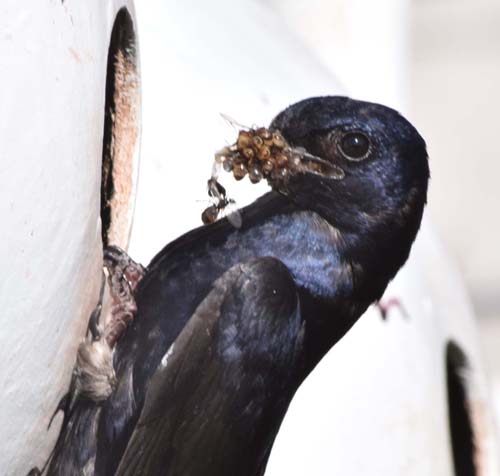

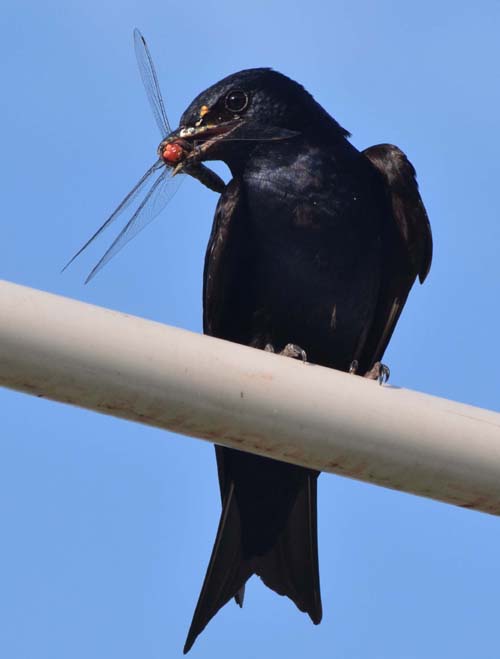


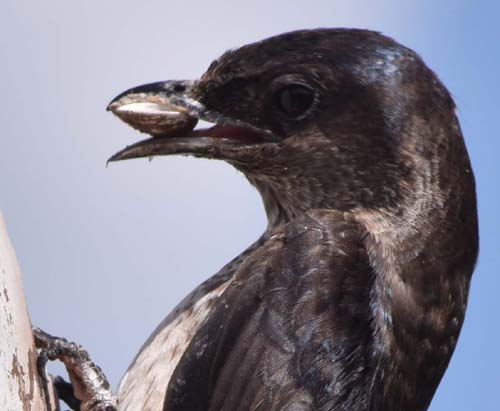
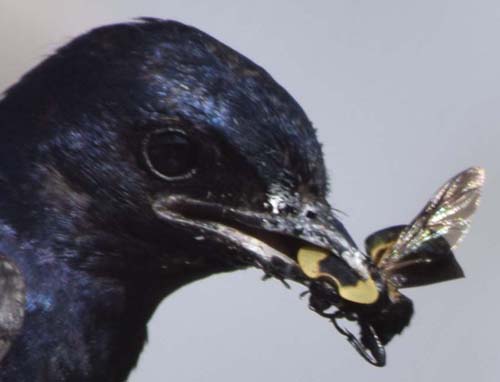
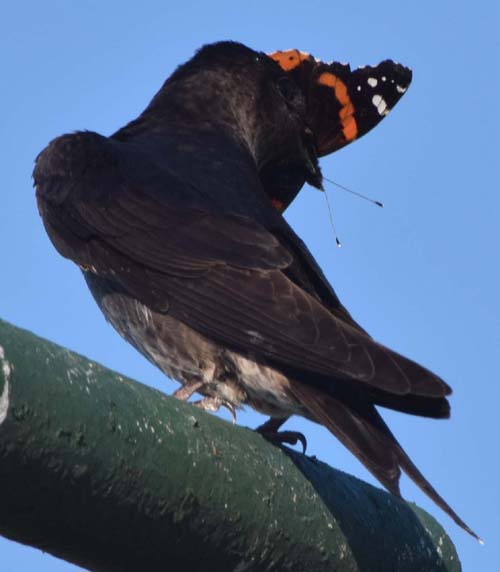




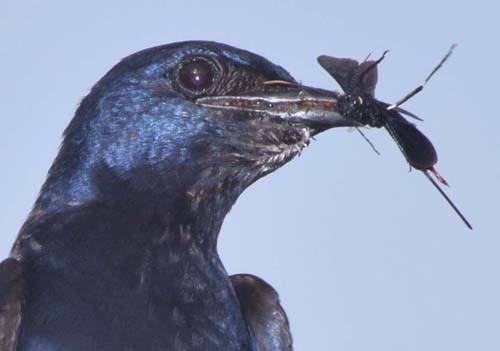


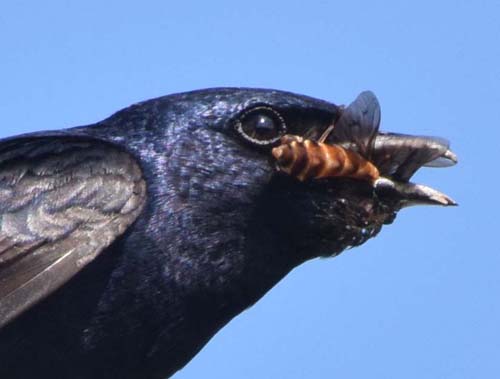

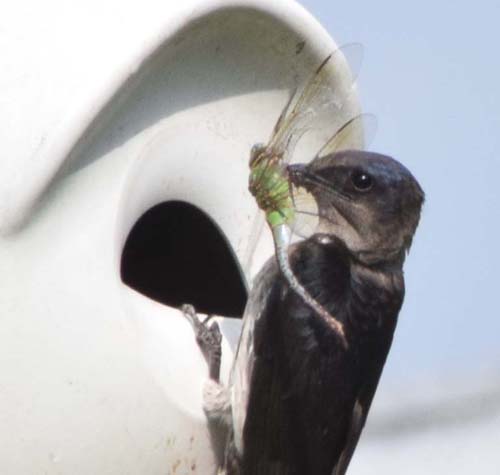
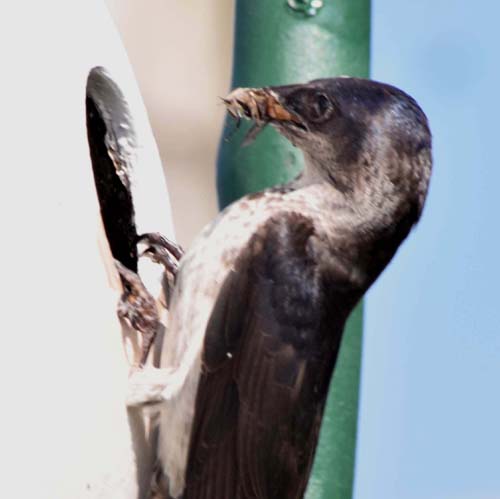

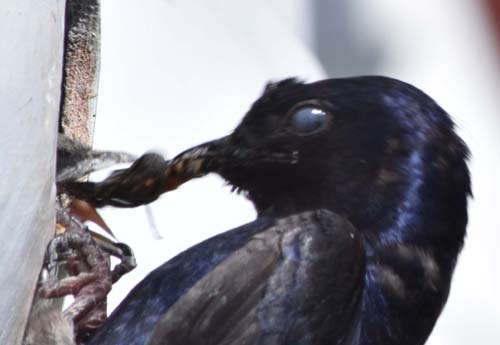

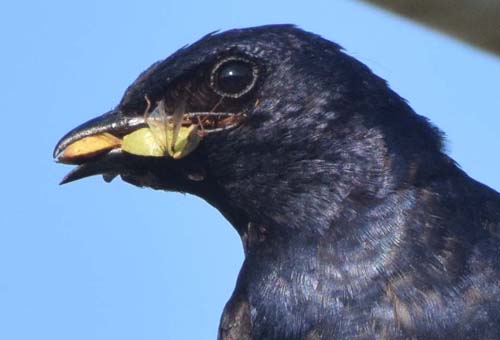

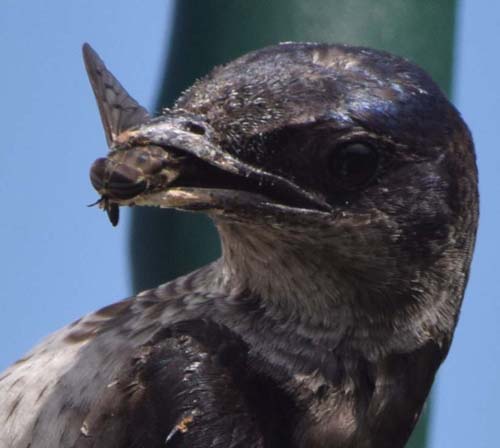
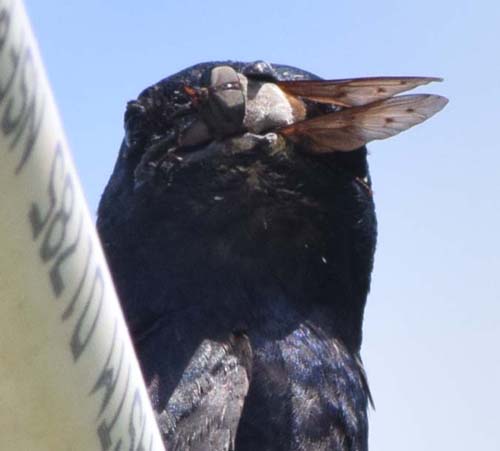


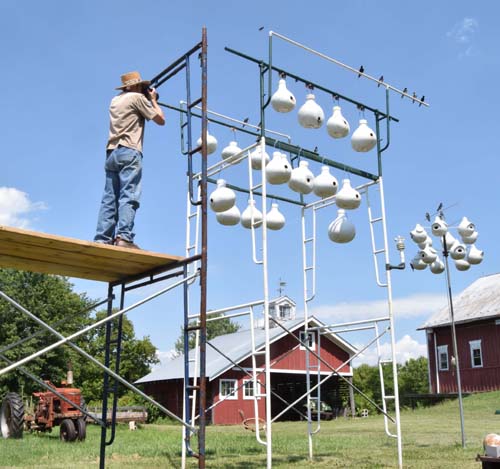
While our martins are seldom seen taking the ground oyster shells offered to them, they all feed their young small clam shells of the genus Corbicula. These are present in Cattail branch, which runs through our property. However, in early summer, the water is often still too high and the eroded banks too steep to offer much opportunity for shell collecting. My guess is that they are finding the shells along the nearby Monocacy River.
The shells vary from 6mm to 15mm in width. Perhaps they are selecting the smaller shells for the younger nestlings and later graduating to larger ones for older nestlings. The photo above is the only time I have actually seen an adult offering a shell to a nestling. The shell is large and the nestlings are older. But, the 6mm shells would likely be hidden from view in the bird’s beak, so I will likely never know without checking for dropped shells in an early nest. That would be rude, so I will let the martins have that secret. But, I would like to know if they are all gathering the shells from the same site year after year.
Of the 30 nests, 15 had from 2 to 10 shells, 7 had from 11 to 20 shells, and 8 had from 21 to 33 shells. I did not record the relative size of shells in each nest, which may have indicated that individual adults might have a preference for larger or smaller shells. But, my guess is still that the shell size depends on the age of the nestlings.
